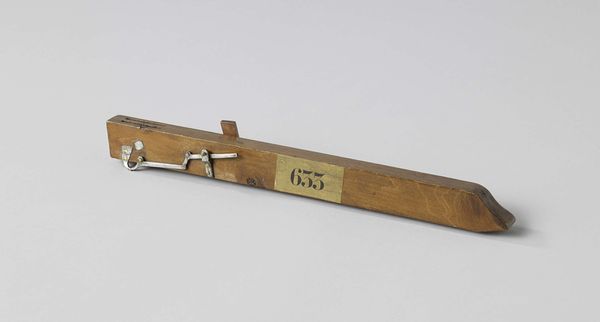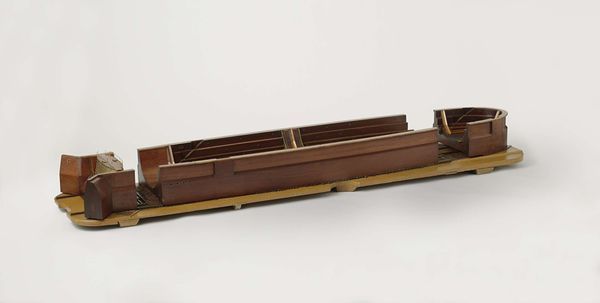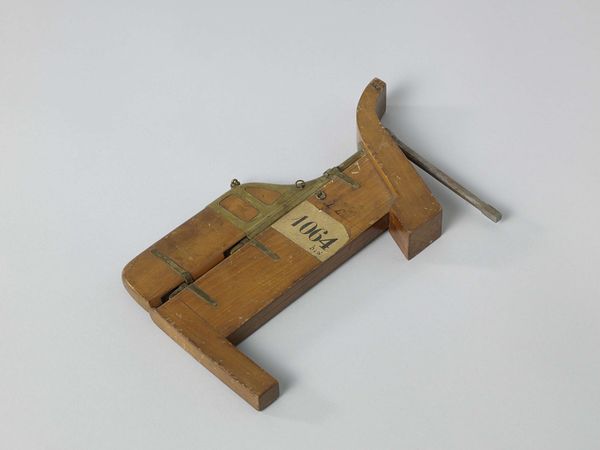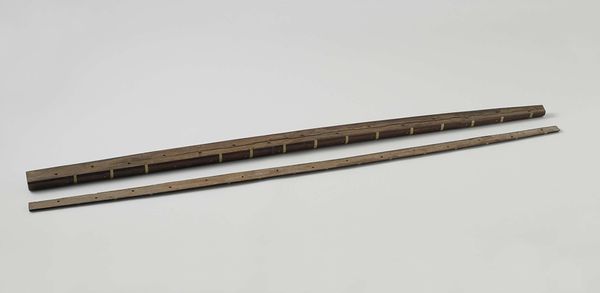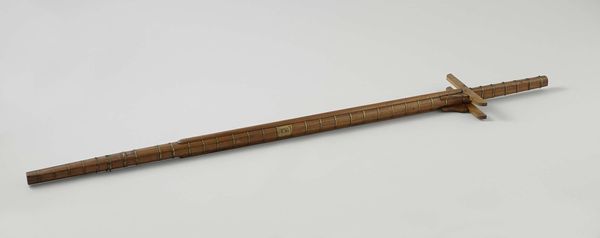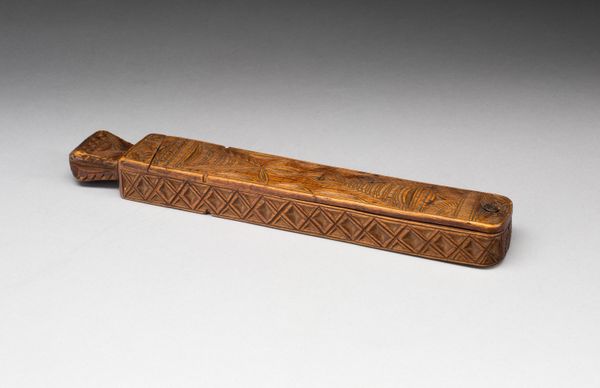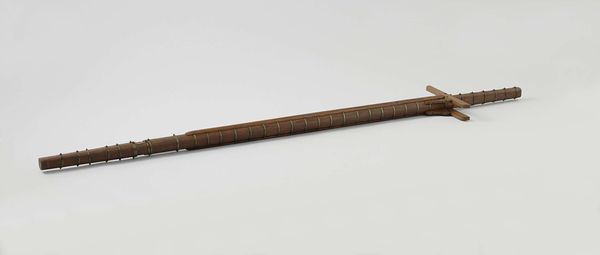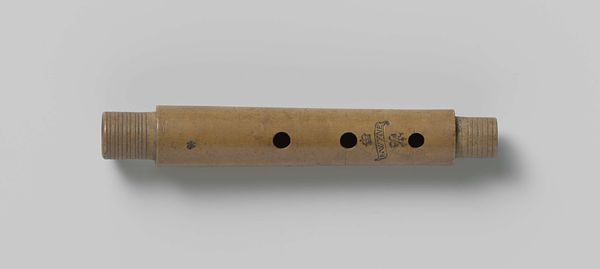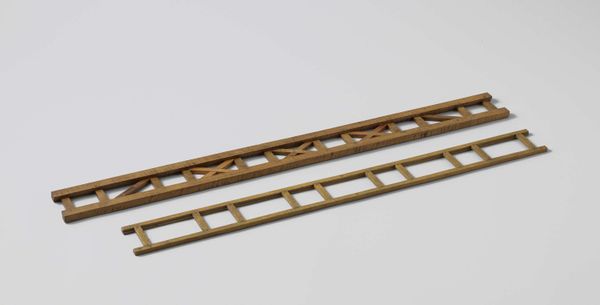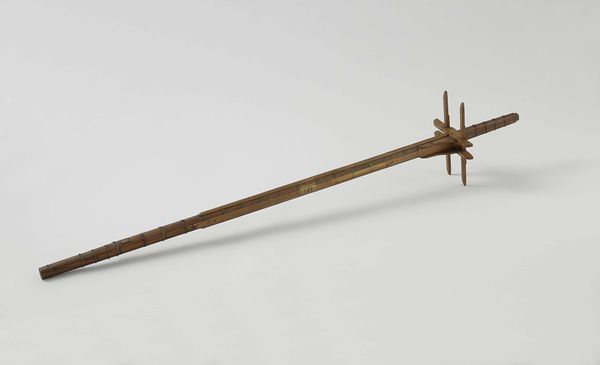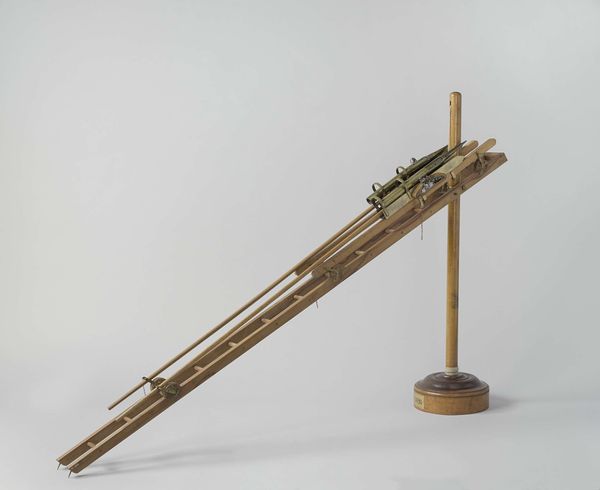
mixed-media, wood
#
neoclacissism
#
mixed-media
#
wood
#
history-painting
Dimensions: height 23.3 cm, width 8 cm, depth 1.8 cm
Copyright: Rijks Museum: Open Domain
Curator: Here we have a "Model of a Rudder that Can Be Jacked-Up," dating from circa 1782 to 1803, crafted with mixed media including wood. Editor: It’s quite striking, in its simplicity. The clean lines and the warm tones of the wood create an immediate sense of order and craftsmanship. It feels very… present. Curator: Indeed. Think about the maritime context in which it was conceived. Naval power was directly tied to economic and political might during this period. This isn't just about sailing; it reflects a period of intense colonial competition, the transatlantic slave trade, and the construction of global empires. Editor: So the function—a jacked-up rudder—speaks to more than just improved navigation, it speaks to control and dominion. The unadorned wood and the precision of the construction give it an air of calculated efficiency. Curator: Precisely! The very functionality becomes enmeshed with these complex histories. Also, consider the labor involved. While we see an object of innovation, we should also be aware of who might have worked with the materials and under what conditions, because colonialism enabled resource extraction as much as technological innovation. Editor: When I look at this, I see a play of forms: the horizontal planks are anchored by the vertical metal braces. There's a pleasing repetition and proportion that lends the object an unexpected aesthetic quality. It transforms what is essentially a tool into something approaching sculpture. Curator: What might the "sculptural" say, if considered along axes of inequality, class and the means to commission/develop pieces like this? I believe the elegance of its form hides darker truths, suggesting systems of power which facilitated the piece and those who sailed and died for colonial ventures during its use. Editor: Fair enough, but it could also reflect Enlightenment ideals—that reason and technical skill would provide progress for all. Though I do admit "all" may have excluded more than it included back then. Curator: Well, this rudder has definitely turned our conversation toward some deep waters! Considering form alongside the historical function truly adds valuable context to such objects. Editor: Absolutely. And engaging with the intricacies of both history and construction, ensures we're navigating those waters with open eyes.
Comments
No comments
Be the first to comment and join the conversation on the ultimate creative platform.
